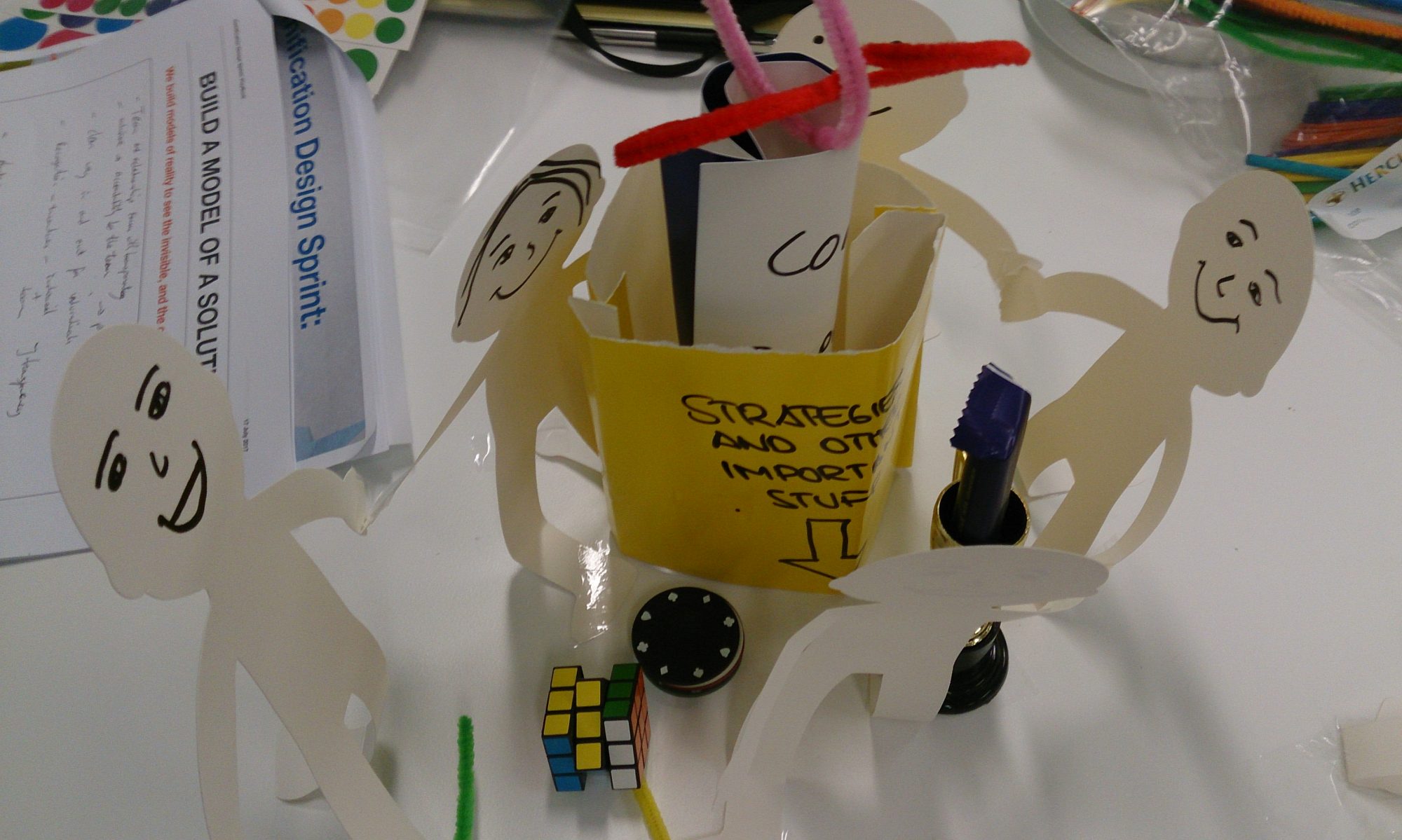In an Innovation Design Sprint, iterative co-design is built in the process to help organisations to let go of deeply held beliefs, influences and narratives and bring these largely invisible forces to the surface. This is a process of unlearning and learning anew which often creates tensions and conflicts within your team as they sit uncomfortably with ambiguity and complexity. This is also the perfect place to channel some of this energy into a creative focus, however it takes time as there are cultural implications and this needs to be done over a few sprint cycles with some well placed relevant side quests.

Using a Foresight Design Sprint as a side quest to break an impasse on developing your long term innovation strategy and drive (please note: foresight is not about prediction, it’s all about playing with alternative radical futures to find our present truth). There are many different approaches to running foresight exercises, and below is my 6-step sprint process that also includes a few example exercises that I use to get teams to think creatively about framing, insight, and ideation:

The best way to run these exercises is to use playful interactions such as a futures game to kick off the session. Games allow teams to ‘suspend belief and disbelief’ and gives them sufficient time and space to deeply consider alternatives, the paradoxical, and even the ridiculous in business strategies and scenarios. For example, you can work with the project team to create their own playful exercises for Step 1 or use one of the many futures card decks and games on the market.
However we at the Lab have developed our own deck in six different categories (of 10 cards each) and gameplay requires that the team pick one card from each category then integrate them into a scenario. Repeat until you have a set of different scenarios to work on. Below is our agile template that asks participants to contribute ahead of the workshop, their own ideas about future trends that we might want to consider during the session.

Another method is to get even more tactile. Below is an exercise using a collection of physical objects as “artefacts from the future” in four different categories. You can either supply these physical objects, or ask your team to bring an item each to the workshop – but leave it to the teams to assign meaning that’s embodied in the objects and for sense-making in terms of the scenarios and stories they are creating. Above all, encourage them to be creative, ridiculous and absurd in their ideas – as there are always elements of truth in the subconscious that we don’t often get to speak or write.

And then level-up the task by asking them to build a physical model of the solution for 2069 (bring in some materials to build with). From here, the remainder of Foresight Design Sprint is set up for success as you have opened their creative drive and allowed them to be co-creators of the process. More importantly, rather than use a dry business process (which tends to tap entrained thinking that’s not helpful to an innovation drive), we use creative and playful tools and exercises that taps curiosity and ingenuity.

Humans are natural imaginative storytellers and this really comes to life when we create future scenarios and back-cast them to the present. We are constantly amazed that when given the right tools and the right space, people can do extraordinary things. Innovation is certainly a marathon, however the introduction of a creative Foresight Design Sprint process is a valuable tool to either kickstart your innovation drive or help it through an impasse. Happy inventing!

